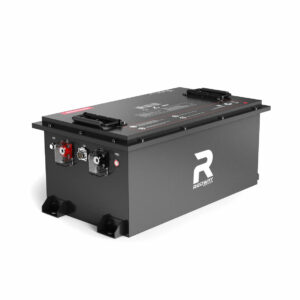What Makes a 100Ah Golf Cart Battery Essential for Optimal Performance?
Golf cart enthusiasts and frequent users understand the critical role a reliable battery plays in ensuring smooth rides across the course. The right power source not only impacts performance but also determines how long you can enjoy uninterrupted play before needing a recharge.
What Is a 100Ah Golf Cart Battery and How Does It Work?
A 100Ah (amp-hour) golf cart battery provides 100 amps of current for one hour,delivering reliable power for extended use. These deep-cycle batteries use lead-acid or lithium-ion technology to withstand frequent charging and discharging. They work by converting stored chemical energy into electrical energy, ensuring consistent voltage output for smooth golf cart operation on varied terrains.

Why Choose a 100Ah Battery for Your Golf Cart?
A 100Ah battery balances capacity, weight, and longevity, making it ideal for golf carts. It offers sufficient runtime for 18+ holes, resists voltage drops on hills, and lasts 4–6 years with proper care. Its deep-cycle design handles repetitive discharges better than standard car batteries, ensuring reliability during frequent stops and starts on the course.
For golfers navigating hilly terrains or carrying additional accessories like coolers or GPS systems, the 100Ah battery’s robust energy reserve prevents sudden power dips. Compared to smaller 50Ah or 75Ah alternatives, the 100Ah model extends daily usage by 30–40%, reducing mid-round charging interruptions. Its design also supports regenerative braking systems common in modern carts, which feed energy back into the battery during deceleration. Additionally, the 100Ah capacity aligns with most solar charging setups, enabling eco-friendly power replenishment between games.
| Battery Type | Runtime (18 Holes) | Weight |
|---|---|---|
| 50Ah Lead-Acid | 12 Holes | 55 lbs |
| 100Ah Lithium | 24+ Holes | 35 lbs |
How to Maintain a 100Ah Golf Cart Battery for Longevity?
Regular maintenance includes checking water levels (for lead-acid), cleaning terminals, and avoiding full discharges. Store the battery in a cool, dry place, and recharge after each use. Equalize lead-acid batteries monthly to prevent sulfation. Lithium-ion variants require minimal upkeep but benefit from partial discharges and avoiding extreme temperatures.
Seasonal maintenance is crucial for maximizing battery life. In winter, keep lead-acid batteries fully charged to prevent freezing, and disconnect them if the cart is unused for over a month. For lithium models, store at 40–80% charge in temperatures above 32°F (0°C). Use a nylon brush to clean corrosion from terminals quarterly, and apply dielectric grease to minimize future buildup. Invest in a smart charger with temperature compensation to adjust voltage based on ambient conditions, which prevents overcharging in summer and undercharging in colder months. Track performance metrics like charge cycles and voltage trends using apps compatible with Bluetooth-enabled lithium batteries.
What Are the Key Differences Between Lead-Acid and Lithium 100Ah Batteries?
Lead-acid batteries are affordable but heavier (60–70 lbs) and require maintenance. Lithium batteries cost 2–3x more but last longer (8–10 years), weigh 50% less, and charge faster. Lithium also delivers higher efficiency (95% vs. 80%) and performs better in cold weather, making them a premium choice for frequent users.
How to Troubleshoot Common 100Ah Battery Issues?
Common issues include slow cranking, sulfation, or swollen cases. Test voltage (12.7V = fully charged) and load capacity. For lead-acid, refill distilled water if levels are low. If the battery fails to hold a charge, check for corroded terminals or internal shorts. Lithium batteries may need firmware updates or cell balancing via a smart charger.
When Should You Replace Your Golf Cart Battery?
Replace lead-acid batteries if runtime drops below 50% of original capacity or voltage dips under 10.5V under load. Lithium batteries degrade gradually; replace when capacity falls below 80%. Visible damage, swollen cases, or persistent charging errors also signal replacement. Most warranties cover 2–4 years for lead-acid and 5–10 years for lithium.
Where to Buy a Reliable 100Ah Golf Cart Battery?
Purchase from reputable brands like Trojan, Duracell, or Battle Born. Specialty retailers (Batteries Plus, GolfCartGarage) offer expert advice. Online platforms (Amazon, eBay) provide price comparisons. For lithium options, consider EcoTree or Redway Power, which specialize in high-efficiency models with advanced thermal management and Bluetooth monitoring.
Expert Views
“A 100Ah lithium battery revolutionizes golf cart performance by cutting weight and boosting efficiency. At Redway, we’ve seen users extend their range by 20% while reducing charge times by half. Always prioritize batteries with built-in Battery Management Systems (BMS) to prevent overcharging and balance cell health.” — Redway Power Engineer
Conclusion
A 100Ah golf cart battery ensures longevity, power, and adaptability for both casual and heavy users. While lead-acid remains budget-friendly, lithium-ion offers superior performance with minimal maintenance. Regular upkeep and timely replacement maximize ROI, making it a critical investment for uninterrupted golfing or commercial use.
FAQ
- Q: Can a 100Ah battery power accessories like lights or GPS?
- A: Yes, but factor in accessory wattage. A 100Ah battery provides ~1,200Wh, allowing 10 hours of 100W usage.
- Q: Are 100Ah batteries compatible with all golf cart models?
- A: Most 36V/48V carts support 100Ah batteries. Verify voltage and tray dimensions before purchasing.
- Q: How long does a 100Ah battery take to charge?
- A: Lead-acid: 8–10 hours; Lithium: 3–5 hours with a 20A charger.
